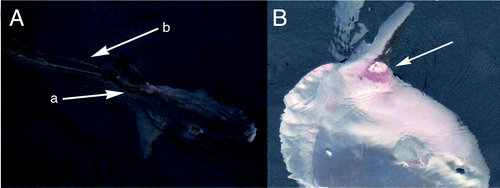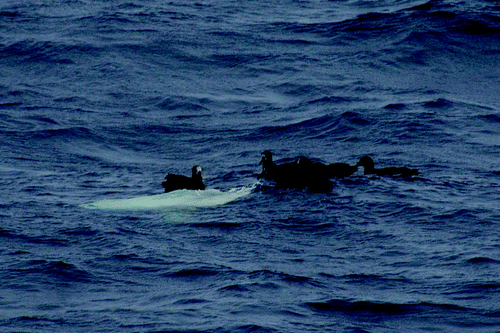Figures & data
Figure 1. (A) A view from above for an oceanic sunfish, attached by several mature female Pennella sp. (white arrow A) showing long egg strings (white arrow B) (photographed by K.S.). (B) A side view of an ocean sunfish with heavily damaged skin near the bottom of its dorsal fin probably caused by Pennella sp. (photographed by K.S.).

Figure 2. Small spots (pointed by white arrows) and a spot with inflamed skin (pointed by black arrow) near the dorsal fin base of the ocean sunfish possibly after removal of Pennella sp. by “cleaners” (photographed by K.S.).


